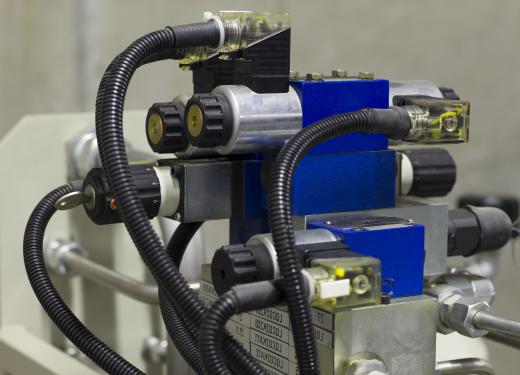A solenoid control valve is a mechanical device that is used to direct the flow of a gas or liquid. This type of valve can be activated electronically using a solenoid. Different varieties of solenoid valves can switch the motion of a fluid on or off, or re-direct the flow in a different direction.
The solenoid found in a control valve is similar to an electric motor. An electromagnet is activated when power is applied. Unlike a motor, however, the electromagnet causes a solenoid to push or pull instead of rotate.
This linear motion can be used to directly move a mechanical valve. The valve moves back and forth like a pivoting door based on the movement of the solenoid. This motion is simple, but is not always powerful enough when high pressures are involved.

High-pressure solenoid controls sometimes do not have a direct mechanical connection to the valve. In this variety of valve, the solenoid instead moves a flexible diaphragm. Pressurized fluid on one side of the diaphragm helps force this flexible part open. A valve that uses this mechanism usually requires less power to move compared to a direct solenoid link.
Control valves can be built to completely open or close every time the solenoid activates. This is useful when a rapid flow is needed. Valves can also be designed to open gradually, based on the amount of electrical signal sent to the solenoid. A valve of this type can be used to precisely adjust the amount of flow.
Some solenoid control units use springs to automatically return the valve to a closed or open position. Others do not have a spring return, but remain in position even if electrical power is lost. Both alternating current (AC) and direct current (DC) models of solenoid valves are available.
Many valves are manually controlled. This means that an operator must physically use a button or switch to activate the electrical solenoid. A solenoid control valve can also be part of an automatic system. In this setup, an electrical sensor can trigger the solenoid when a preset temperature or pressure is detected. This feature is often useful in automated factories or machines.
Several different applications rely on solenoid control valves. Industrial lifting equipment, for instance, commonly uses these valves to enable or disable the flow of hydraulic fluid to a cylinder. Appliances that use large amounts of water, such as washing machines, often use solenoid valves to control the flow of fluids.
